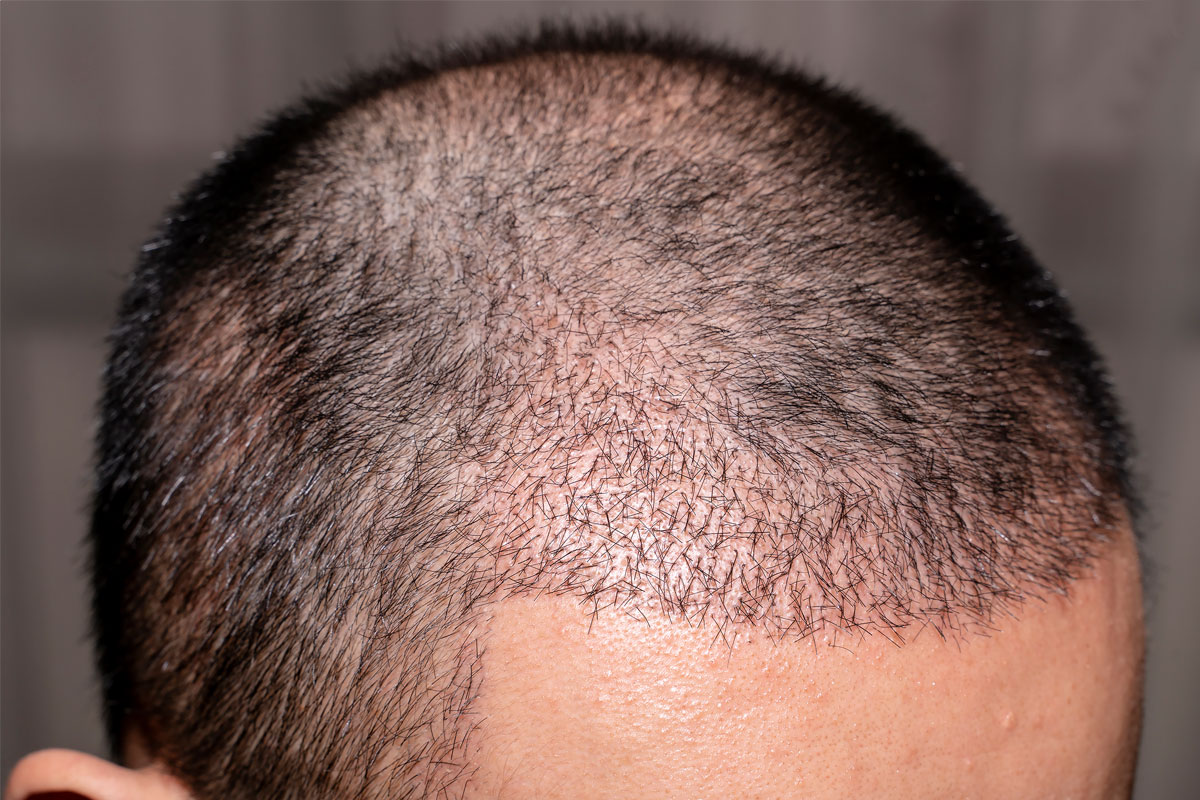What is a hair transplant?
Hair transplant is a procedure by which hair is extracted from certain areas where hair never falls out, such as the lateral areas of the head and the nape of the neck (donor areas), and transferred to bald areas of the scalp (recipient areas). After an initial drop at 2 or 3 weeks, transplanted hair grows back 2 or 3 months (adaptation period) and stays there for as long as it would have stayed in its place of origin, preserving the same color and characteristics of its original area. The results are definitive and for life.
Who can benefit from this surgery?
People who can benefit from hair transplantation are:
- People who experience continued hair loss, especially men with advanced or medium degree of baldness.
- Women with hormonal hair loss.
- People with scar baldness (Burns) or for hair diseases.
- Patients who want to repopulate the eyebrows, the beard or pubic area.
Hair transplant is not indicated in incipient baldness or in patients with poor or scarce donor areas in relation to the area to be covered..
First consultation with the surgeon
At the first consultation for a hair transplant, the surgeon will take a complete medical history, as well as an evaluation of the degree and evolution of baldness, and the quality and quantity of the donor area. It will also study the lines of implantation of the hair, so it is advisable to take photographs in which the original implantation line is observed. Based on all this, determine the ideal time for intervention.
How should you prepare for the intervention?
It is advisable to stop smoking well in advance to favor the oxygenation of the skin and its correct healing.. Any medication that affects bleeding or blood clotting should be discontinued (aspirin, clopidogrel, syndrome, etc.).
How is a hair transplant done??
Most of the hairs come out of the scalp in groups of 2 or 3 hair. About only the 15 percent of the hair comes out as single hairs and another 15 percent comes out in groups of 4 or 5 by the. These small groups of hairs are called Follicular Units or Groups., which are the basis of the transplant. Obtained with the aid of a microscope, sectioning strips of skin 8 a 10 mm width of the previously shaved donor area.
The place where the skin is divided is subsequently sutured, leaving a small scar that will be covered by hair. Once the skin strip is obtained, it is divided into small sheets of tissue from which the Follicular Units are classified according to the number of hairs that form them, as they were in their original place. This is a meticulous procedure on which the final result depends. Small incisions are made in the recipient areas where the Follicular Units are transplanted individually.. Its distribution, previously agreed with the patient, will follow patterns according to age and the evolution of baldness. The approximate duration of the entire process is 2 a 4 horas, can sometimes take longer.
If you need a second or third session, the first scar that remained from the donor area will be removed, which is replaced by the last, so that only a scar will remain.
How many sessions are necessary?
The number of sessions depends on the type and degree of baldness. For small baldness, a single session is usually enough, and for large baldness from two to three sessions. It is advisable to space the sessions between four and six months.
recovery
At first small crusts form in the recipient areas, that disappear in a few days. While the scabs remain, no sports should be performed and hair should be washed daily with an antiseptic soap.. After this time, the patient returns to his normal habits., and you can use your shampoo, dye and cut hair, etc. The pain is controllable with the usual analgesics. 2 or 3 First days. Recovery is immediate and no type of bandage is required.. The final result is not observed until the 10 or 12 months of intervention.
What complications can occur?
Complications of hair transplantation are infrequent and can consist of:
- bleeding.
- infection of the area.
- abnormal scarring.
Source: https://www.redaccionmedica.com






